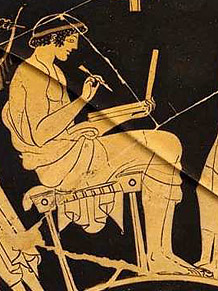http://www.jerusalem-library.org/
Information from the site:
The Jerusalem Library, initiated in 2001 by Prof. Sari Nusseibah,
President of Al-Quds University and Prof. Ronnie Ellenblum of The Hebrew
University of Jerusalem, is meant to be a comprehensive resource for
the history of Jerusalem. The library, hosted together by the two
universities, enables free access to digitized historical materials and
primary sources about Jerusalem. The collections are based on the
archives of the Jewish National Library, the Israel Antiquities
Authority and the collections of al-Quds University.
To date, most of the historical sources are kept in national, religious,
municipal and private archives and are not accessible to all. Physical
and non-tangible barriers prevent potential readers, in Jerusalem and
elsewhere from exploring the vast and complicated history of the city.
The virtual library is meant to overcome these barriers
The Library makes use of innovative content-oriented IT tools and
enables a more convenient, home-based search in the documents
themselves. The biggest part of the collections are books, maps,
photographs, engravings and inscriptions published for the first time
before the beginning of the 20th century.
The material is scanned, OCR'd and thoroughly indexed. The indexing was
carried out by a group of Palestinian and Israeli students who were
supervised by specialists specializing in Classical Languages, Arabic
and Islamic Studies, Hebrew and Jewish Studies, Geography History and
Christianity,
The basic idea of the library is to enable the user to retrieve indexed
extracts of various fields. Efforts were made to include topics such as
gender, feelings, various stages in life, love, war, hatred,
inter-community relations and other topics which are usually not
included in traditional indexes. These features will enable the Library
users to directly access historical data, thus eliminating the external
narrator or historian as the interpreter of history.
Creating such an academic unbiased approach to the history of
Jerusalem is a challenging task for while Jerusalem is the contested
capital of two peoples, it is also a spiritual center for each of the
world's three monotheistic religions and a universal symbol of hope and
holiness. Through the Library, Jerusalem will be made accessible not
only to its own residents and the countries that shoulder responsibility
for its future, but to the entire world.
The partners
Al-Quds University was established in 1984. Today it offers over
100 distinctive programs (B.A, higher diplomas, and M.A.) in 12
different faculties, in addition to being home to the only Palestinian
Medical Faculty. The University's 7000 students are offered degrees in
fields ranging from law to technology.
Since its establishment in 1998, the Center for Jerusalem Studies has
been conducting studies on the city of Jerusalem from its various
aspects. Through its interdisciplinary cultural heritage programs, such
as tours, seminars and symposiums, the Centre for Jerusalem Studies
provides the Local and International Community with a Palestinian
perspective on historical as well as contemporary Jerusalem.
The Hebrew University of Jerusalem is the first university in
Israel. It was founded already in the early 1920s, and includes fifteen
faculties and inter-disciplinary schools, divided into tens of
departments. For many years it hosted the Jewish National and University
library as well as numerous academic collections.
The Department of Geography at the Hebrew University of Jerusalem, who
was responsible to the development of the site from the Israeli side,
offers courses in sustainable urban planning, historical geography and
historic cities as well as research and other scholarly activities.
